Black Bears Eating Insects: Foraging Sign & Behavior
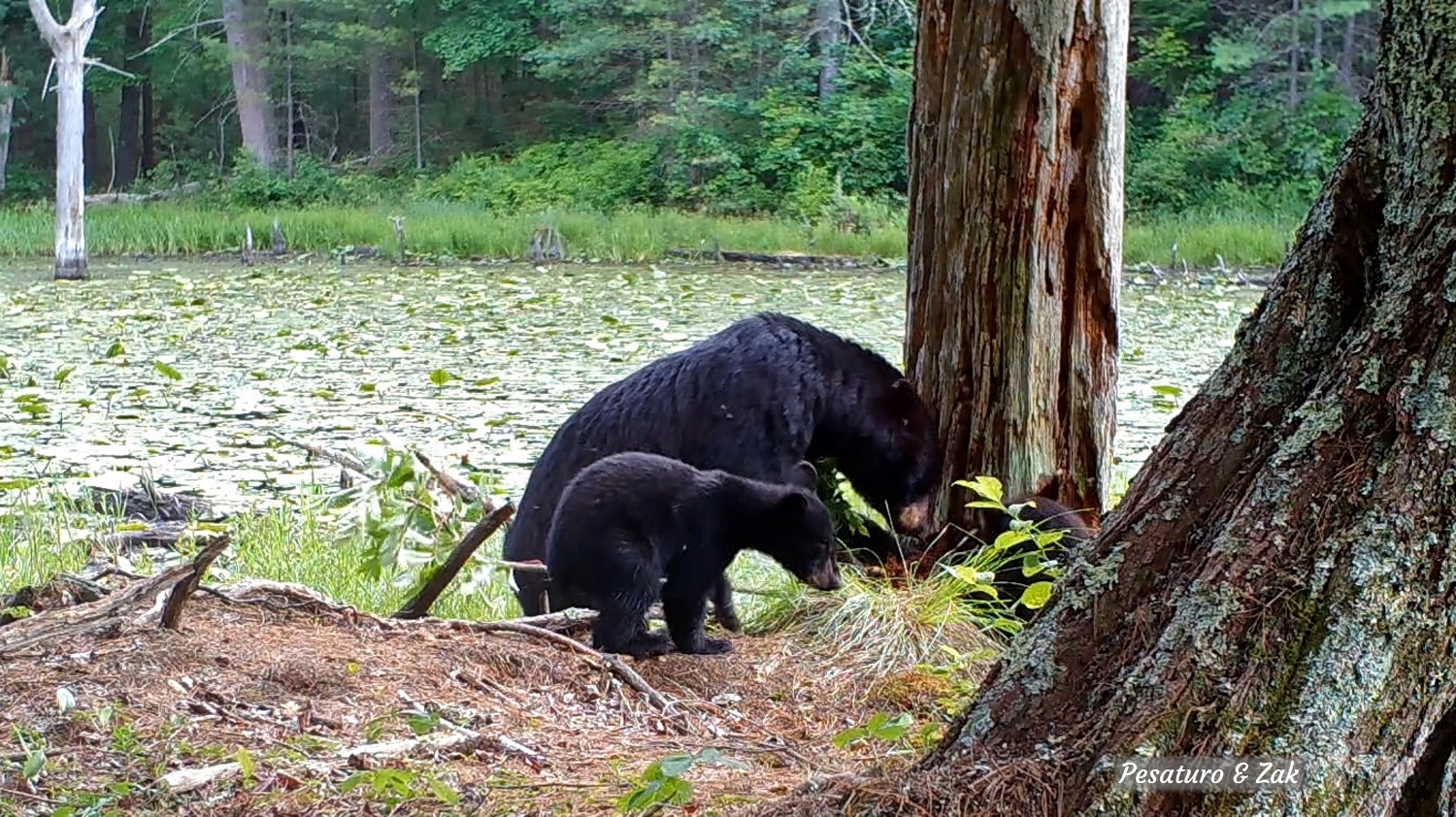
Only about 10-25% of the black bear’s diet is animal food, which in most regions is in the form of colonial insects and beetles. Recently we captured some great footage of a sow with cubs digging a nest of wasps or bees from a dead tree, and another video of a cub pawing through crumbling sticks, possibly to find ants. In both cases I photographed the foraging sign created by the bears. In this post I will present the videos along with photos of foraging sign from these two sites, discuss the animals’ behavior and share additional photos of probable sign of black bears eating insects.
Black Bears Eating Insects – Background
Bears dig and tear into snags, stumps and logs to find insects such as ants, wasps or bees. They also turn over rocks and cow patties to find insects, earthworms, and other invertebrates. In the case of insects, bears are most interested in the immature ones – eggs, larvae and pupae – because they are high in protein and fat. When a bear finds a honey bee nest, it might eat the honey as well as the insects. But, consisting of mostly carbohydrate, the sticky sweet gold is nutritionally less valuable than the developing insects.
Bears leave foraging sign in their wake after partaking in the delicacies but sometimes it is difficult to rule out some other cause, like foraging sign of another species, or even natural decay, in the case of crumbling, well-rotted wood.
For the past several years I have been photographing what I thought was foraging sign of black bears eating insects and other invertebrates, and hoping to get trail camera video footage of bears engaged in that activity to confirm or disprove my theories. I find it very helpful to correlate the animal’s behavior with the evidence they leave behind. Doing so answers some questions and raises others, and informs interpretation of animal sign I find elsewhere. I will share and discuss these photos as well.
Bear Digging Insect Nest from Snag
The video below not only helps us correlate foraging behavior with foraging sign but also provides a peek into the bear’s reaction to the stinging insects. And, because the foraging sow has 3 cubs in tow, we can observe their reactions as well.
Foraging Behavior and Sign
Watch the above video and notice that the mother digs in a focused portion of the snag (presumably where the nest is), and the debris consists of a lot of small pieces. In fact it’s almost powdery. The following photo shows the foraging sign – a hole the size of a wasp’s nest and a pile of fine debris at the base of the tree. Absent are remains of the nest. That is because mother bear ate it, as can be seen in the video at 1 minute 43 seconds.
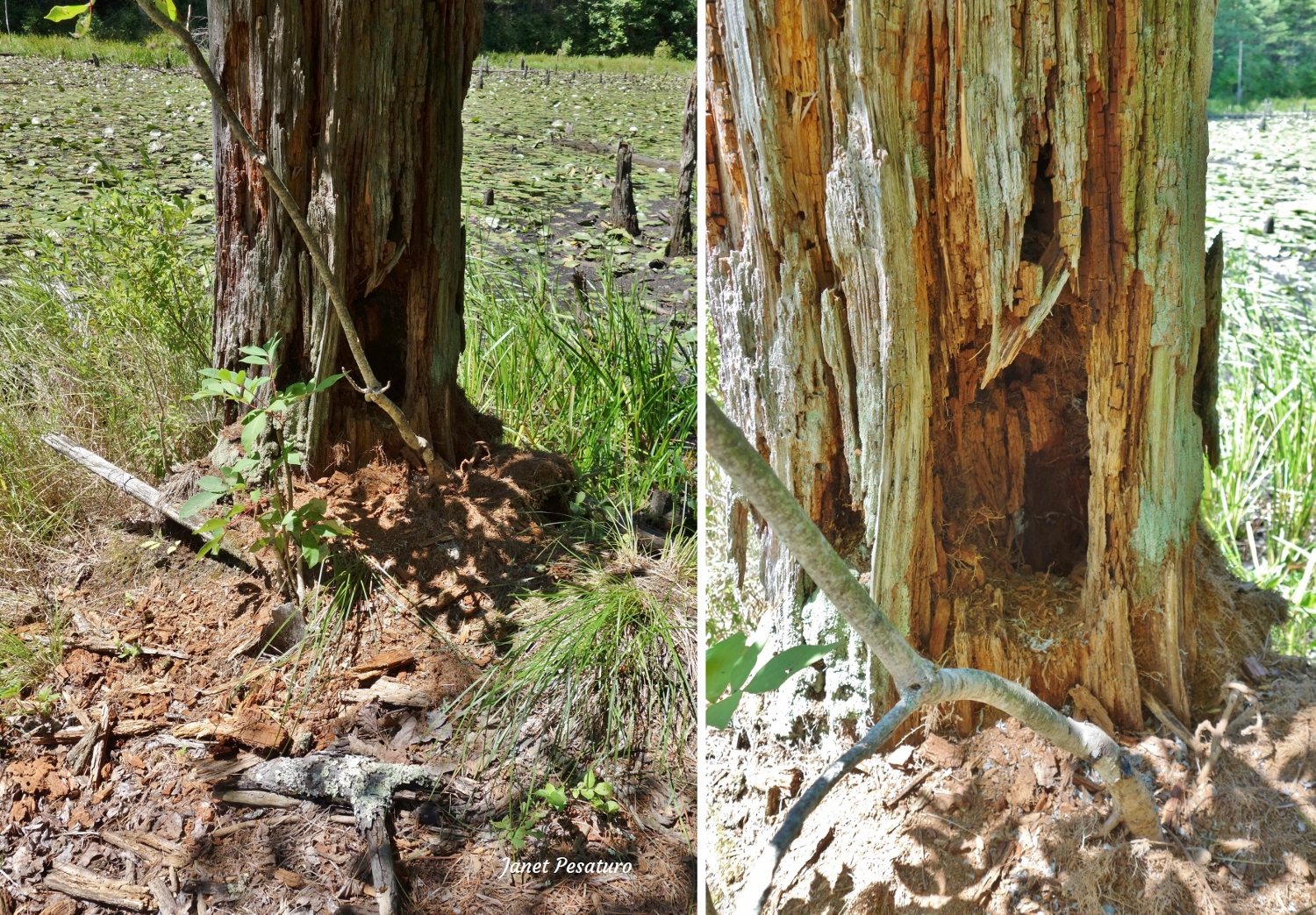
I used to think that a distinguishing characteristic of bear foraging sign in wood is the presence of large pieces of wood flung far from the tree or log. Perhaps I read that somewhere or heard it in a tracking class – I’m not sure. But the idea was that bears are so large and powerful that they demolish the wood in a way that smaller species cannot. They certainly can demolish a snag or log in a way that smaller species cannot, but now I know they don’t necessarily do that when harvesting insects.
I do wonder when it is possible to rule out other species, such as raccoon, who would also like to dine on immature insects. Raccoons will dig into soft soil to harvest crayfish but I don’t know how soft wood needs to be for them to excavate a wasp nest.
The Bears’ Reaction to the Stinging Insects
I noticed several interesting things about the bears’ behavior – please feel free to add your observations in a comment
- The mother appears merely annoyed with the wasps, swatting and shaking them off.
- The cubs react vocally with raspy complaints (at least I think that sound is coming from the cubs). Learn more about black bear sounds.
- The mother doesn’t react visibly to the cubs’ distress, perhaps because she knows they will be fine.
- While the cubs look more distressed than the mother, in the end they quietly follow her away.
- One of the cubs climbs the tree, as if escaping a terrestrial predator. I believe it was Debruyn, in his book Walking with Bears, who said bear cubs have the “up gene”, meaning they are born with the instinct to climb a tree to escape danger. Usually that makes a lot of sense…but not always.
My sense of this was that the stings did not cause much pain, if any, and that the insects were just an annoyance, much like mosquitoes are to humans.
Cub Breaking up Sticks
I think the cub in this next video is breaking up sticks to forage for ants, perhaps mimicking his mother’s activity. She moves on, as if she knows there isn’t much food there but it appears that the cub might have obtained a small snack.
The next photo shows the foraging sign on the sticks created by the cub. All that is evident is that some of them have been freshly broken up. Quite subtle indeed. If I had seen this before the video, I would never have thought “bear sign”. It’s a good to keep in mind that bears come in different sizes, including very small.
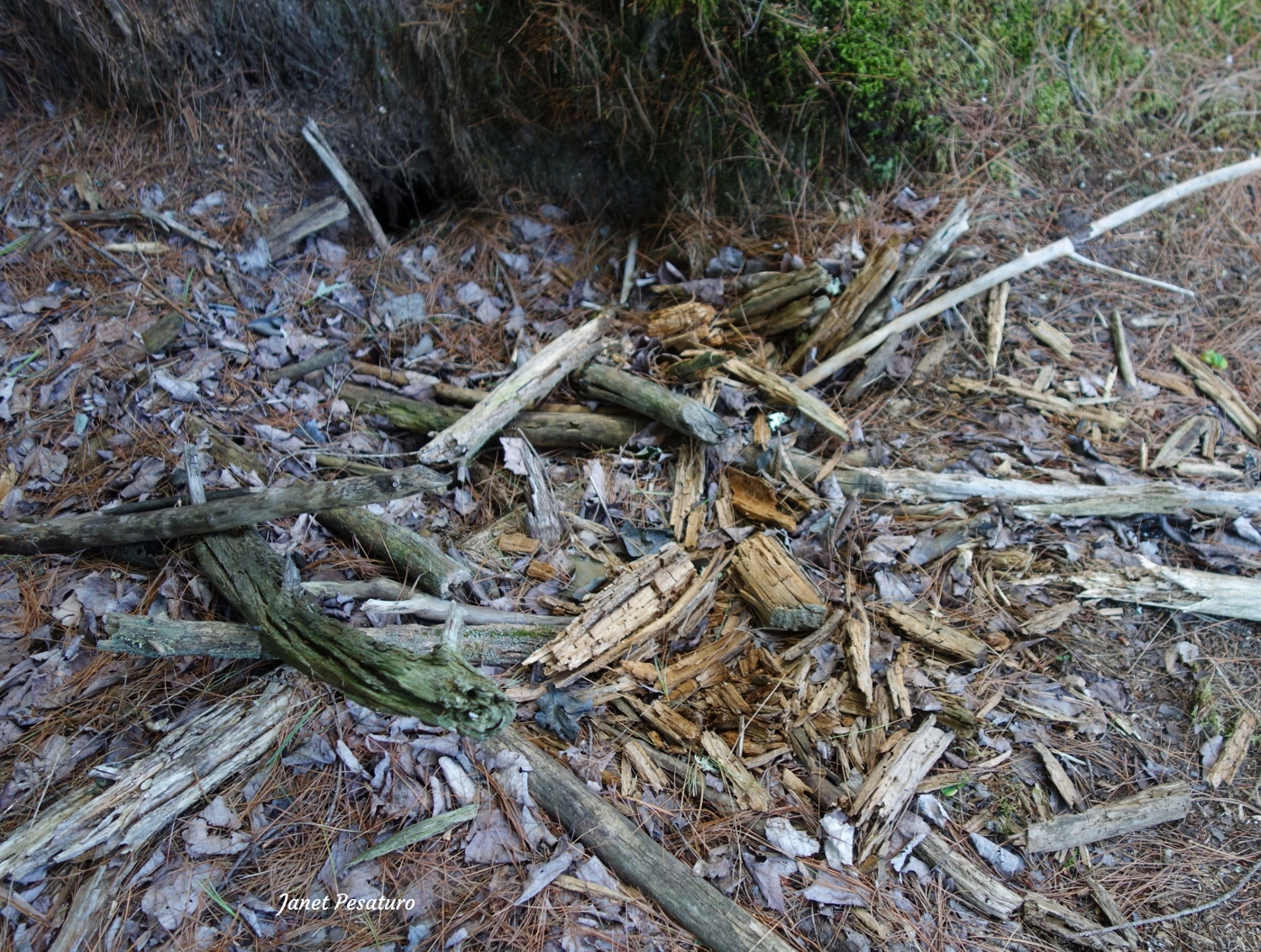
Additional Photos of Bear Foraging Sign
Torn up Dead Wood
Here are some photos of excavations in logs that I’m fairly certain were done by bears. The holes are large and the debris pieces too big to have been torn off by a smaller animal. (Other than the key fob in one of the photos, there is nothing in them for exact scale, but all logs were at least a foot in diameter.)
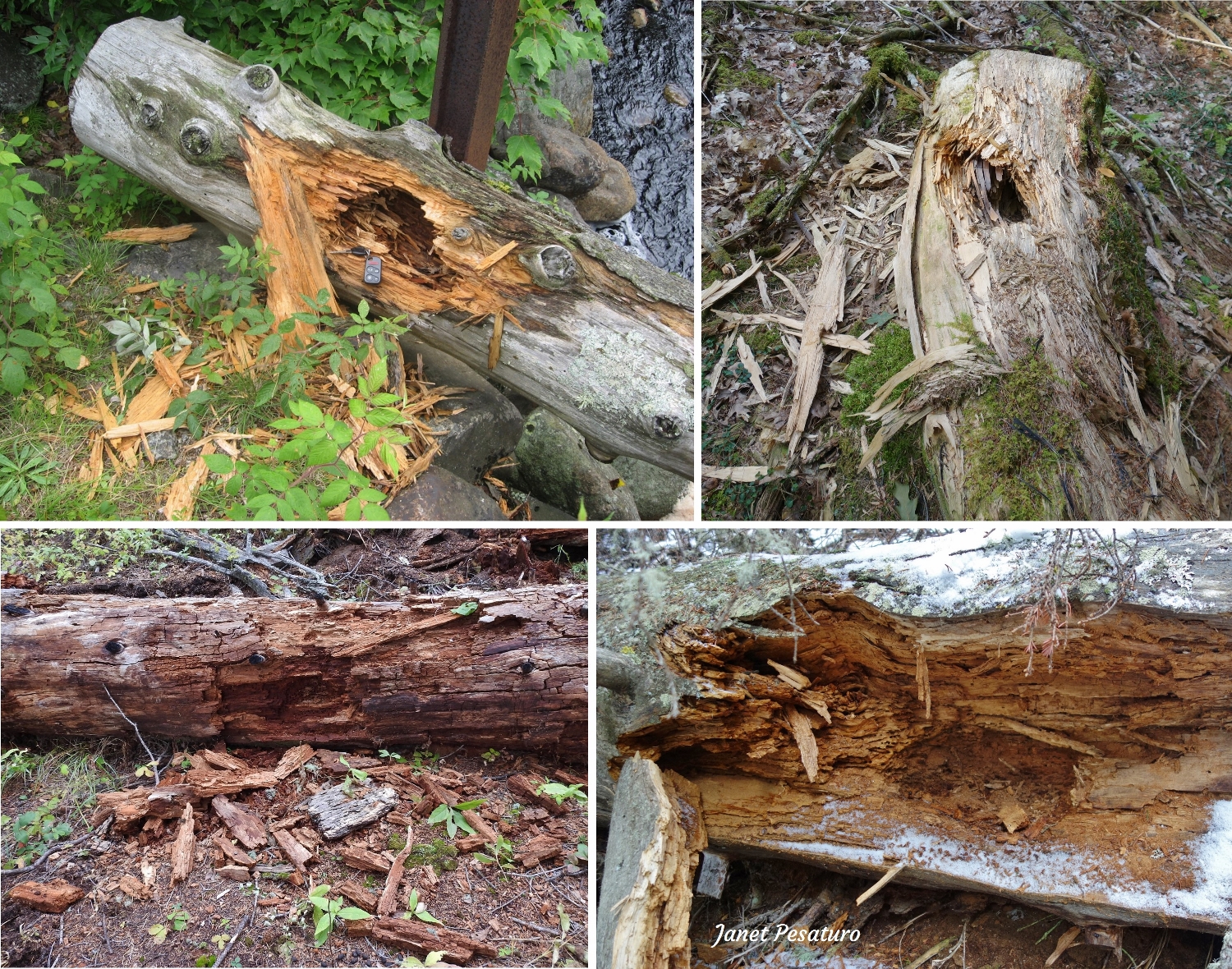
Here’s one where the torn off pieces are indeed very large and flung far from the source. I know that it wasn’t the result of a snag shattering after falling to the ground, because I had seen the log already on the ground before the large pieces had been torn off.
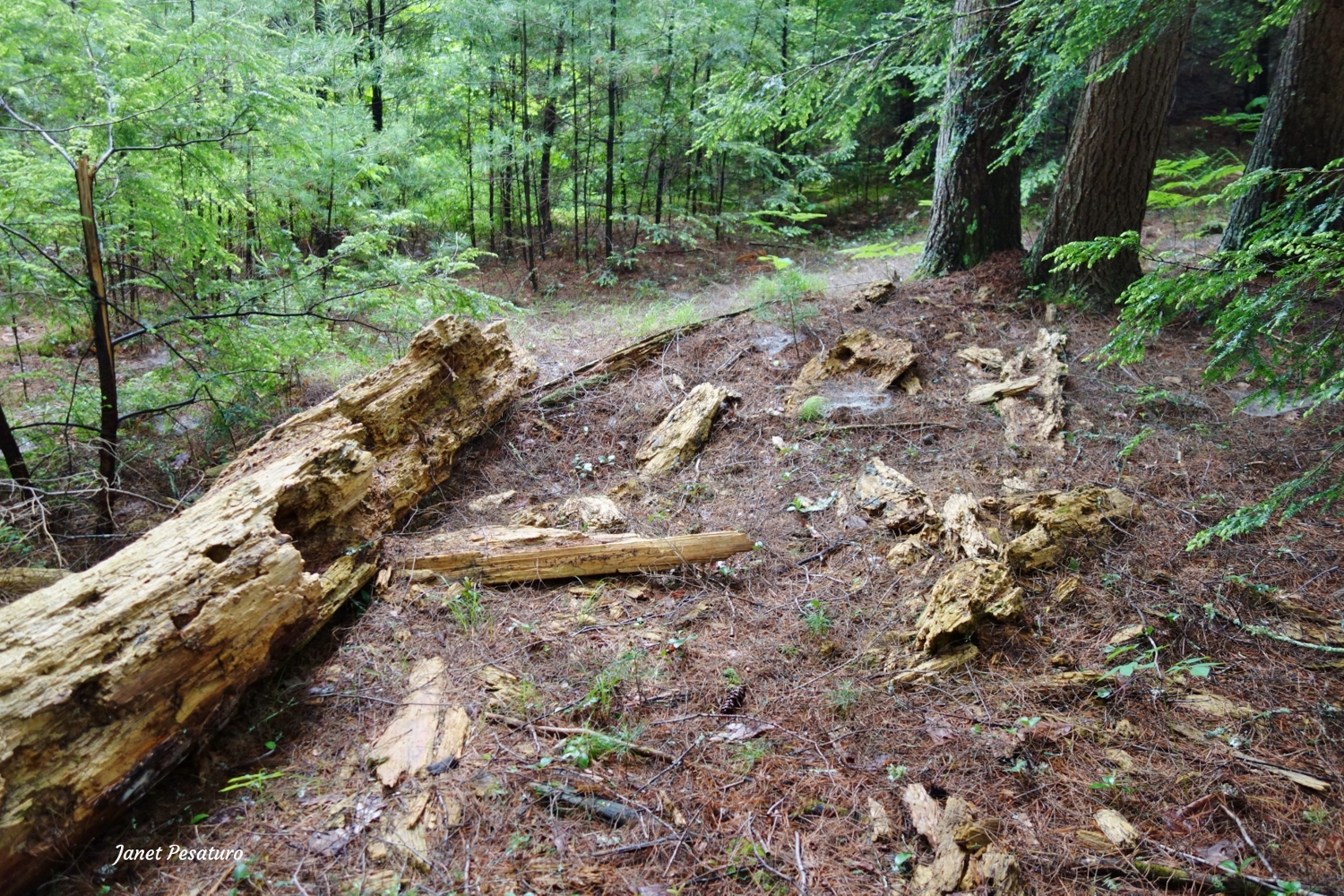
This torn up snag has an additional clue that a bear did the job – bear size claw marks, which can be seen on the vertical piece in the closeup.
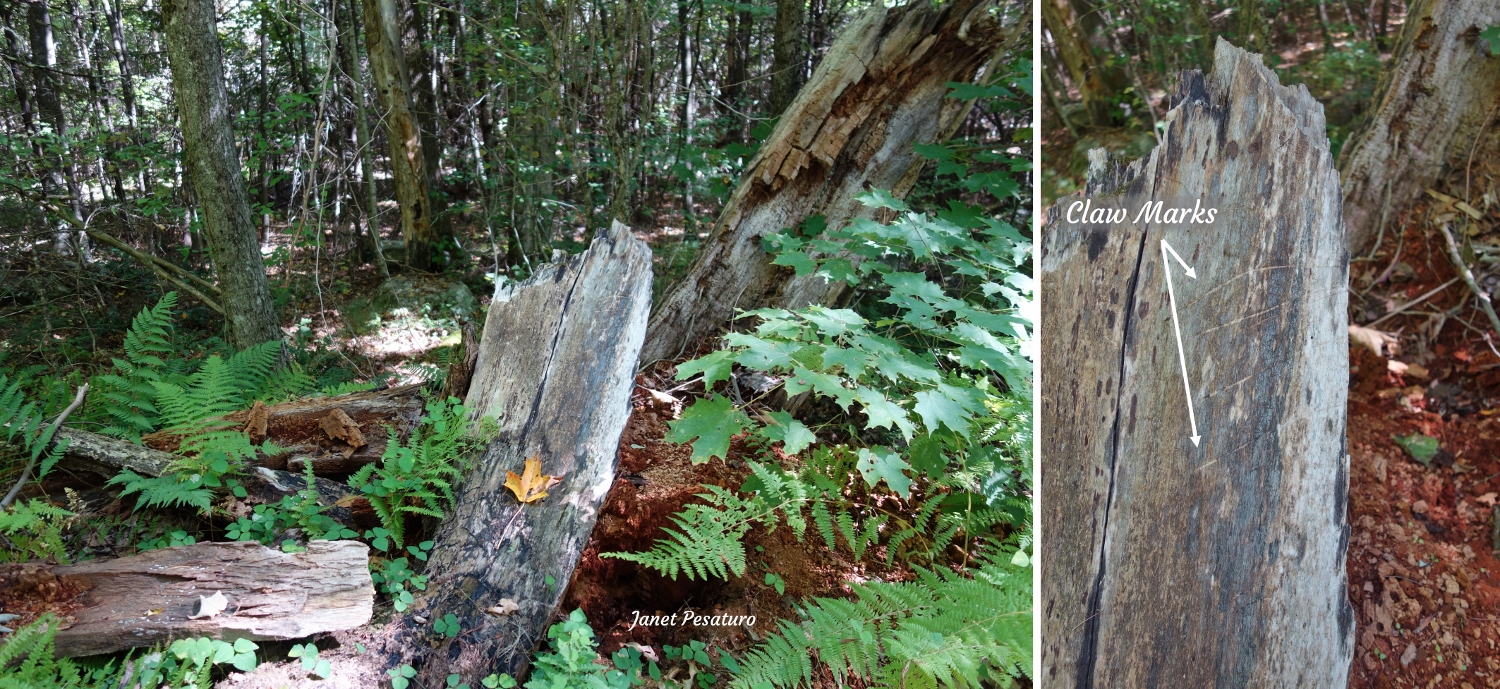
Flipped objects
The flipped log and the turned rocks in the photos below were too heavy to have been moved by anything other than a bear. The cow dung was probably flipped by a bear or, in the case of the one turned onto its side, a raccoon or even a coati, since it was in Arizona.
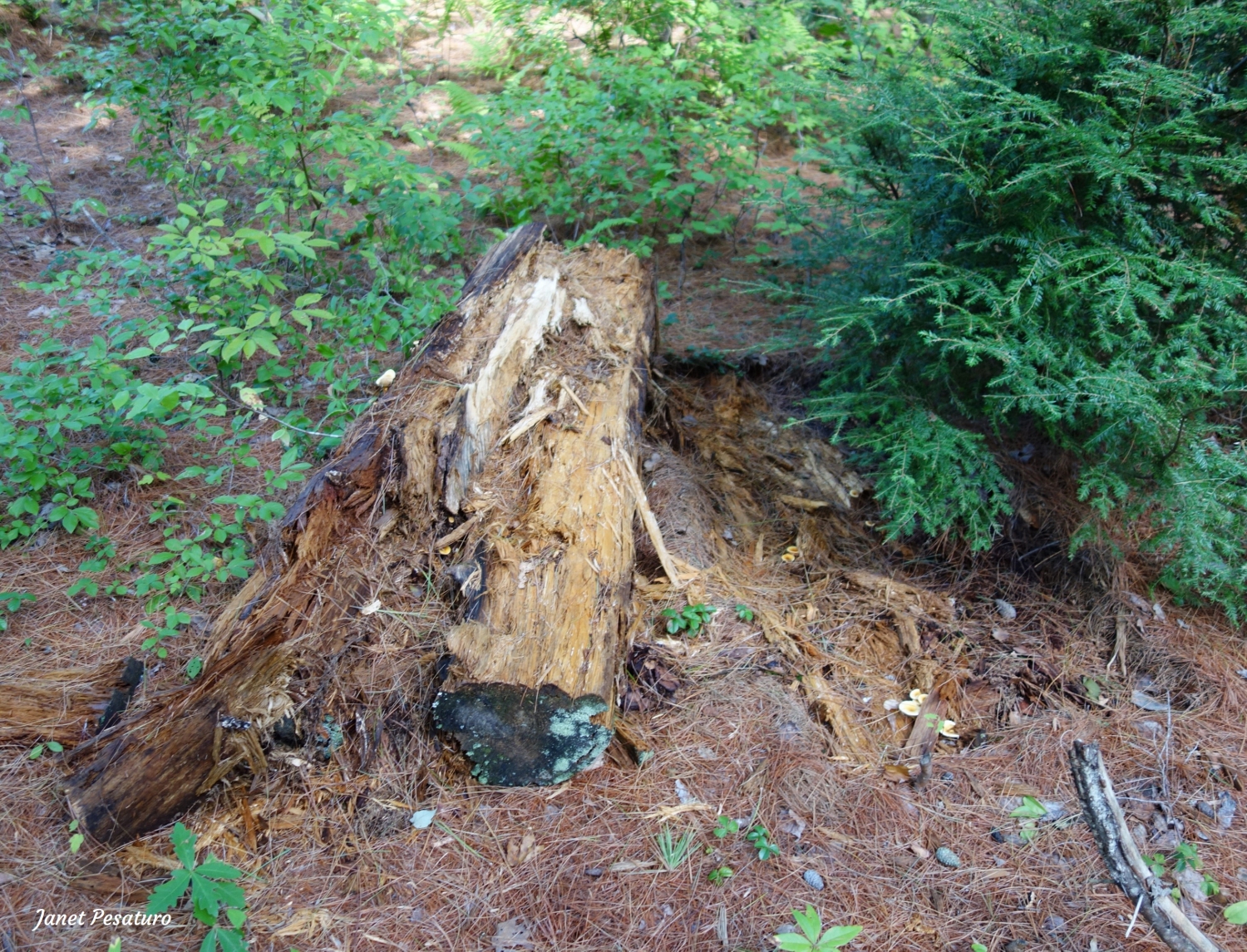
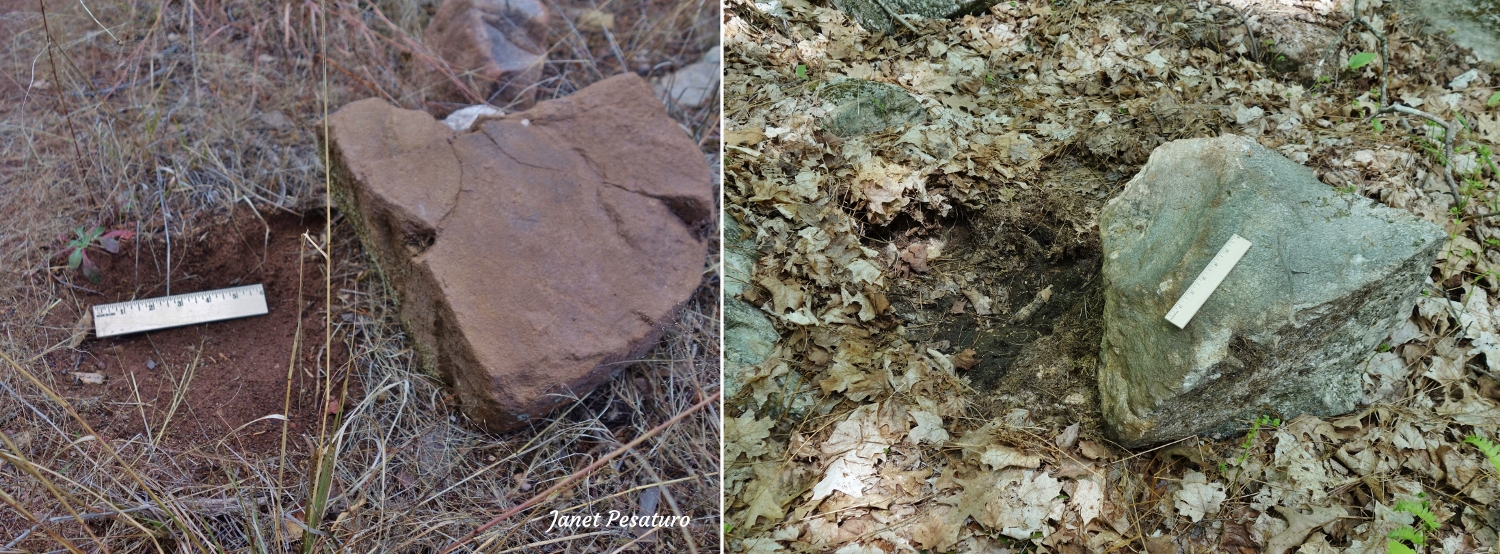
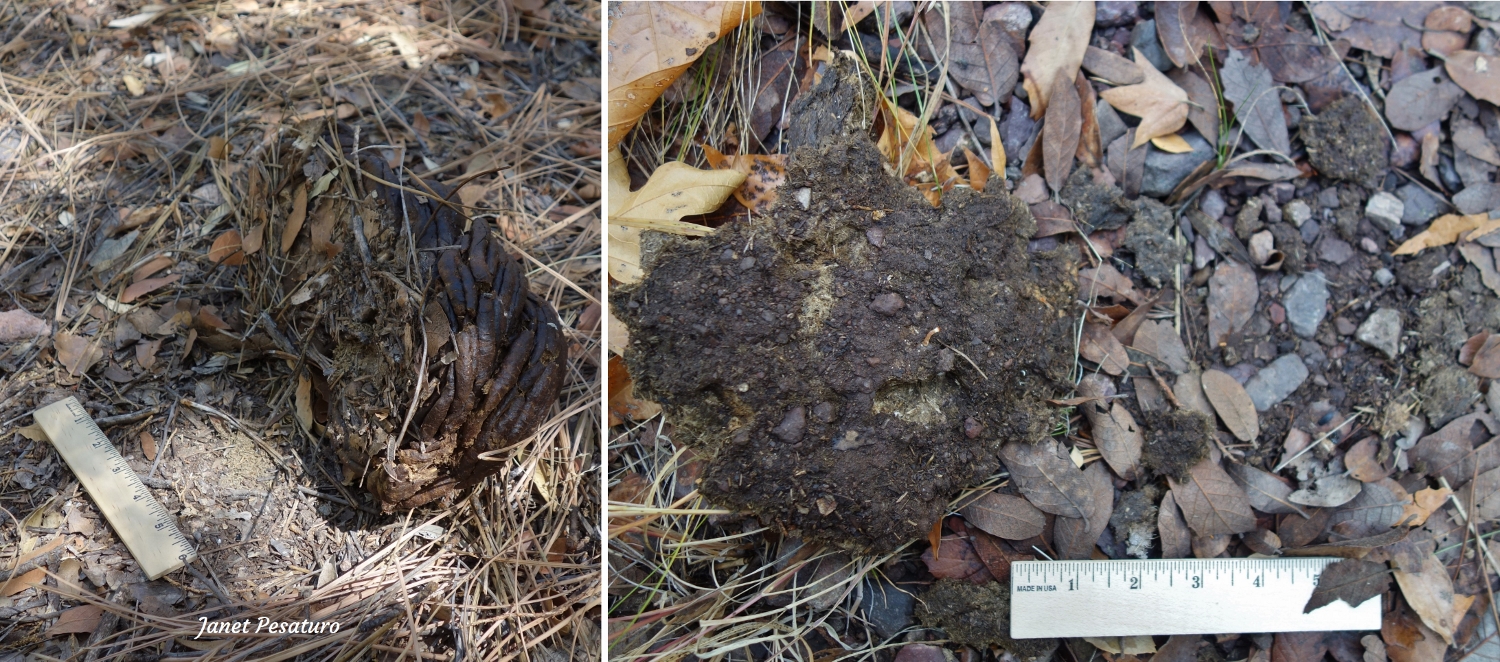
Digs
Black bears are much less likely than grizzlies to dig for food as I explained in Grizzly Bear Root Grubbing, but they do occasionally dig, especially if the substrate is soft. The next photo shows a wasp nest dug from the ground in Montana, where both black bears and grizzlies roam, so I can’t pin it on one vs. the other.
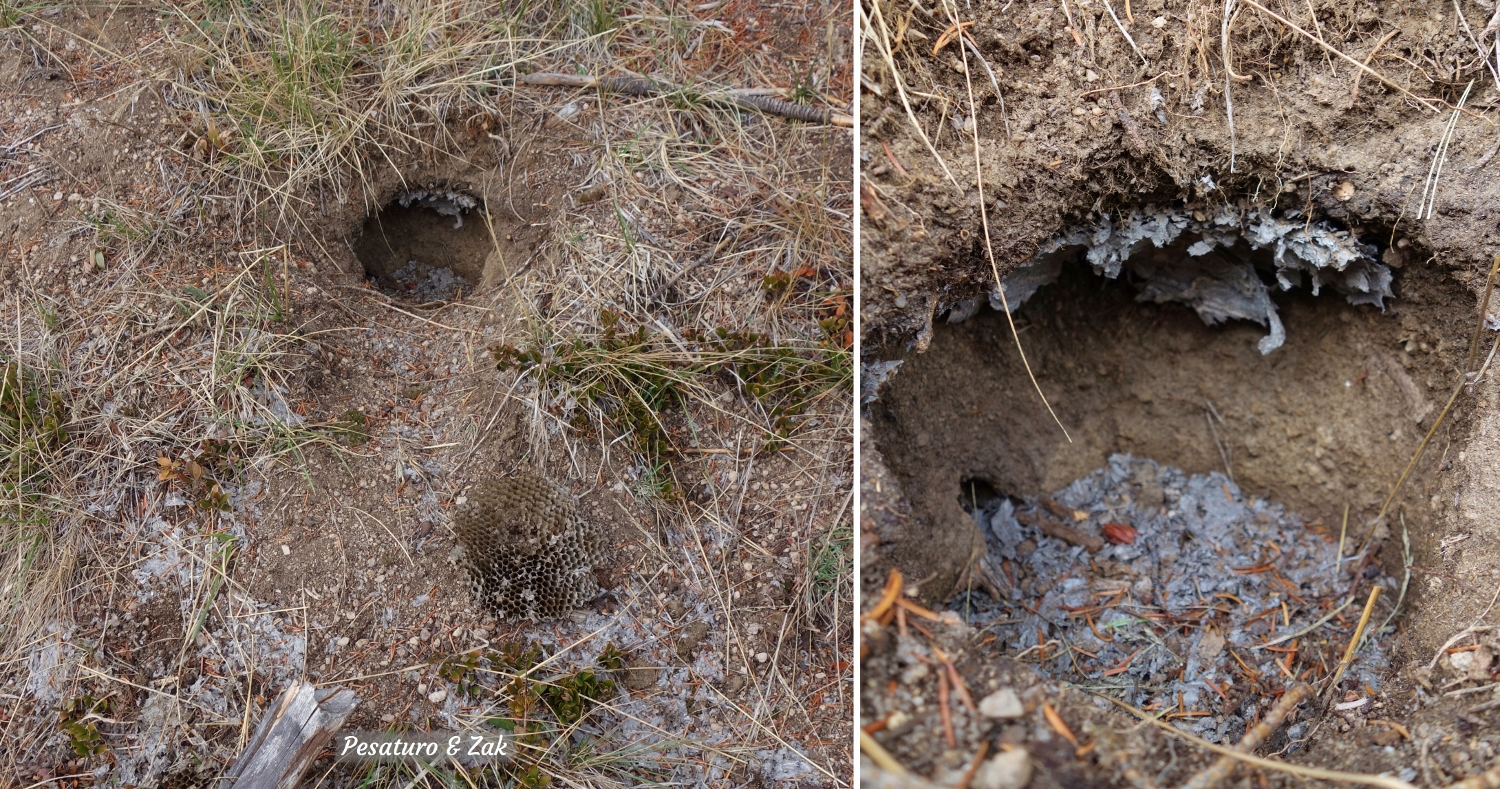
I also wonder if a smaller animal did this because much of the nest is still present and we saw in my video of the sow raiding a wasp nest that she appeared to eat the entire nest. Perhaps a smaller animal would pick out the developing insects and leave the nest. How about a raccoon or a skunk? Badgers are also present in that area, and they are expert diggers, usually for burrowing mammals.Would a badger go for immature insects and would it pick them out, leaving the nest? Hmm. I don’t think so but I’m not entirely sure. What do you think?
Feel free to share your questions and thoughts in a comment below.

Thank you for this outstanding article rich in content! This will certainly prove useful in my future outdoor endeavors.
I’m so glad to know that, Shawn! Happy tracking.
Great article. I live in the San Juan mountains of northern New Mexico, a friend & I were going for a walk & she told me that she was fearful because a man had kicked her wooden pathway to her shed apart & she was nervous about it. I asked to see it & as soon as she showed me, I knew that it had been a bear looking for grubs. For starters she admitted that her dog had “gone nuts & wouldn’t stop barking” & the dog wasn’t unfriendly to people. The wooden path looked solid on top but once it was turned over, underneath was chewed up by bugs. The pieces were tossed about & I understood why she thought some guy had kicked it apart, but there was no reason for anyone to kick it apart. Then there were the bear tracks in the mud nearby. I was happy to see that the bear, this one, at least, was still eating natural food & not trying for garbage. Thanks for the informative article! Dawn
That’s a very cool story, but I had to wonder if learning that it was a bear rather than a person made your friend even more nervous!
As always very interesting and full of information! Thank you! It seems the mother doesn’t share the food. Probably the cubs benefit from nursing. And just learning how to get possible food sources.
Yes that is a great observation. The cubs are young and the mother would still be nursing them, so she is probably very hungry and in need of a high protein high fat meal. As you say, the foraging in and of itself is a great lesson for the cubs.
wonder if the cubs cried out in your first video of digging for bees/wasps, because their mother was there to respond – helping them distinguish if they should continue the activity or not. She didn’t give a warning to run, so they stayed, learning a new food. On a video from Appalachian Bear Rescue (ABR), a hornets nest was knocked into the wild enclosure of 4 orphaned cubs. Without a mother to give guidance, they all jumped on the nest and ate it without verbalizing – just swatting a few stings.
In the case of torn logs, I try to remember that Black Bears do dig dens and so have fairly good digging power, tho not near as good as Grizzlies. I think about what their claws do best, and that’s the short, “hooking” motion that facilitates climbing trees with rough bark. Then seeing a rotted tree or log, looking for that same hooking ability, and their biting ability, to dig in, hook the dead wood, and then pull out the resulting wood chunks. It seems the pieces of wood would be about 2″ wide for the teeth and 1″ wide pieces between claws, scattered the distance of paw reach to shoulder, (2-3′) as the most effective “hook, pull, drop” range. Larger, lighter pieces of wood do look like they get thrown farther from the main log, in my yard. It seems only the bear has the broad paws to toss the large pieces backward in the hurry of digging for reward.
My understanding is that Bears can withstand the stinging of bees/hornets, due to thick skin and fur everywhere but nose, face and ears – which is where the bears in your video swatted the most. I don’t know of another animal who could both rip out large chunks of dead wood and withstand the stings, other than the Bear.
Fascinating observation about the behavior of the captive orphaned cubs vs the wild cubs with their mother. All kids complain more when mother is there to hear it, don’t they, lol?
Yes compared to grizzly claws, black bear claws are better adapted for climbing than digging, but they do sometimes dig. I don’t know that I’d go too far in interpreting the size of the wood pieces because the degree of decay also factors in. If it’s really far gone it can crumble into little pieces with little effort.
Yeah I’ve heard they are sensitive to stings on the face but even there I wonder if wasp stings are much less painful for them than for most people. A bunch of stings on the face would put some people in the Emergency Ward, with a lot of pain and swelling, perhaps with eyes swollen shut.
Thanks to Janet and all who add comments. Great insight! This is the best learning opportunity for me.
It looked like one of the cubs was the first to start digging and when he got annoyed by the stings, Mom took over. Terrific look at bear foraging! I’ve seen a couple of holes with wasp/yellow jacket nests in my yard, eventually the nest dug out. Have wondered what did it.
I agree with you – they cub may have been the first to notice the nest, or maybe mother noticed first but did not initially choose the best spot to start excavating so she took over the cub’s spot.
What a great capture and you’ve answered a question for us! My wife and I frequently find where black bears have moved rocks and dug up wasp nests, where we hike in NW Oregon. We’ve been curious about how they get to the larvae, whether they tear up the nest and pick them out or if they just eat the whole thing, and your video answered that! Now we’ll be looking for paper in bear scat!
Hmm, that is a good point – we may be able to see pieces of the nest in scat. Kim Cabrera has a photo on her site of remains of an adult wasp in bear scat. I meant to link to that in this post but forgot. Perhaps I will edit that in.
Janet; It happens that I’m doing a project to try increasing plant diversity in my area of Pinyon/Juniper/open meadows in Arizona. Among plants natural to the area, I’ll include some roots which Black Bears may like, such as Biscuit Root and Celery Root. I’ll have a camera on site to see who digs the area and how. It will take a while for plants establish, but I’ll let you know if I have any results. – Pat
I meant Caraway Root (not Celery.) -Pat.
Hi Pat, what a great project! However I do think wild caraway is not native to N. America and can be aggressive in some areas, outcompeting native plants. May be better to focus on native members of the carrot family (like biscuitroot).
Thanks for the advice on Caraway. I found a great site for verifying native plants at https://gobotany.nativeplanttrust.org/. It says, as you did, Caraway is invasive (in 2/3 of lower 48 states.) Now I know, just because bears eat it, doesn’t mean I should plant it in a Native Garden. I’ll focus on Biscuit Rood for now. I have 6 roots arriving for Fall planting. THX, – Pat.
Good luck with the project. It will be interesting to see if you get bears digging up the biscuitroot.